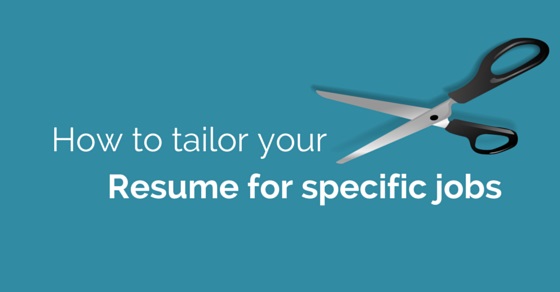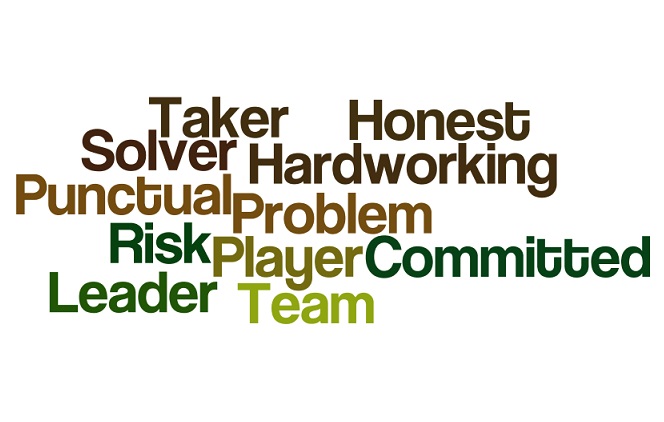It is very common to all of us when we hear people say, “In today’s challenging world, a resume must be explicitly written to a specific job in mind”.
That is because; we all understand that developing a resume is an experience that comes by as and when we all grow into different kinds of challenging atmospheres.
However, we all must also believe that a correctly structured resume will definitely help us bag a newer or better job.
 The good old days of presenting a general resume written for all purpose with a cover letter that highlighted all the key points are not days we can expect to see anymore.
The good old days of presenting a general resume written for all purpose with a cover letter that highlighted all the key points are not days we can expect to see anymore.
In those days, framing a resume was a tedious and time consuming job. These documents were made on a machine called the ‘typewriter’ and hence re-doing the resume meant re-chiseling a statue! (Wow! Imagine if those were still the days?)
Recruiters these days expect all of us to modify our resumes in the best possible way to suit their job profiles.
This basically helps them screen our resumes precisely to find the best fit for their job. There is also perspective to this, any employee who is unwilling to invest time and effort to put their best foot forward in modifying their resume, is probably not a good fit to the firm as you may portray yourself to be the kind who is also unwilling to make any contribution to the organization.
So giving this kind of impression may only land us in not getting us the job no matter how qualified we may be.
How to Tailor your Resume?
One of the most important aspects of resume writing is tailoring each resume to the specific job, we shall also look into the various developments that we can make to our resume.
This article aims at educating us in the field of re-writing our resumes to customize to our recruiters choice.
1. Read the Post:
When you read through a job posting and if you think you are interested in the same, the first thing is to read the job description carefully.
Make sure you scrutinize the data carefully and understand what is expected out of an employee applying for that post.
What you need to be aware of is, when you are looking at two job opportunities, carefully tailor your resume for both the openings.
This is simply because, even though they share the same job title, it may call for a different set of skills. The following are steps that follow from this stage.
2. Vocabulary:
 Many of our recruiting firms and organizations are not specialized in deciphering your abilities by just reading through your resume, in the sense that they are not engineers or scientists to deduce your capacities.
Many of our recruiting firms and organizations are not specialized in deciphering your abilities by just reading through your resume, in the sense that they are not engineers or scientists to deduce your capacities.
Hence, they look for certain specific keywords on the resume and try to identify if the given candidate is qualified for a certain job or not.
So what recruiters do is that they obtain a set of keywords from the HR Department and scrutinize the resumes by searching for the same keywords in the resume.
In this process, we should understand that highly qualified personnel would not qualify for this job if he or she misses out on these ‘keywords’.
Now picking out these key words are simple, just look at the job posting and any other content that you could look up regarding the same. Then pick out things that will suit your qualification as well as the job.
3. Content:
Note that most recruiters are very busy people. Since they multitask most of the time and handle many job openings at the same time.
Here is what you need to keep in mind, remove unnecessary information and include data that will add to your job profile.
Highlight about 5-10 points that best describes your abilities. Make it look like a qualification summary and put this information in the first page of your resume.
This will ensure that you have taken the right efforts to highlight your strengths and this recruiter will actually appreciate.
4. Target resume:
Here is also how you could impress the recruiters by presenting them a targeted resume.
First, your resume should address the given opportunity. This makes it easy for them to see how your qualifications are a close match to their requirement.
Second, you may use powerful words to throw emphasis on yourself and have a clear outline in your resume.
Remember that by transforming your simple resume to a target oriented resume, it only plays up your strengths and shadows any factor that may look like a dent in your resume, for the interview.
5. Listing experiences:
Listing your experiences in a systematic way will also help you crack the impossible. After your qualifications summary, maybe it’s a good idea to enlist the experience role.
Your work experiences, accolades, achievements and curricular events may add on to your positives. Make sure to choose strong resume action verbs to show what you have done.
6. Hobbies and Interests:
 Somewhere towards the end after all the main content in your resume, it also makes absolute sense to enlist a few hobbies and interests that you may have.
Somewhere towards the end after all the main content in your resume, it also makes absolute sense to enlist a few hobbies and interests that you may have.
Cultural diversity and extra-curricular activities may actually show that you are quite widespread in terms of engaging your time.
This section may not necessarily impact your selection but it definitely does not do any harm either.
7. References:
In general, most of us do not actually include references. But in some cases if you think the posting is crucial and providing references makes your resume a strong one, then you may very well add the same.
Include only those references that are relevant to the job posting you are applying to.
8. Tailoring for individual companies:
Here is what you should finally keep in mind. Tweak your resume to suit the companys’ mission and goals.
Read and carry out some research on the company. Visit their homepage to find out what area they are specialized in, what products and or services they are proficient in.
Information such as if they are a modern or a traditional company, if the employee capacities are large or small.
Following the guidelines will help you improve your outlook. The above laid steps may help you in more than one way if applied in the right manner.
Make sure to critically analyze the situation and assess the given situation. Put to use some of the tips discussed above. This way you will surely crack more than one job opportunity.
Feel free to review, comment and share any knowledge that you may want to express here with regard to this topic.







































